Michael Golden: The Bird is a Space
January 9 - February 6, 2016
An exhibition of selected artworks in various media made by Michael Golden over the past 20 years.
Essay by Volker Eisele
First proposed by Pythagoras, the “music of the spheres” is a philosophical and mathematical concept that regards mathematical proportions in the movements of Sun, Moon and the planets as a form of music. Just as musical notes are connected by an identifiable pattern of proportions, so are the movements of the celestial bodies. They are all thought to emit their own unique hum or orbital resonance based on their orbital revolutions and to express qualities or “tones” of energy which manifest in numbers, shapes and sounds.
The existence of fundamental “harmonic structures” was thought to be the key to understand the known universe and to experience music and by extension all art forms as pleasing sensations. Michael Golden’s work is steeped in this 2500+ years old tradition and he elegantly weaves his experiences of nature into a mathematical matrix, sometimes referred to as “sacred geometry”.
“Sacred geometry” has its roots in the recognition of patterns found in nature and its mathematical principles at work. Prime examples are the logarithmic spiral of the chambered Nautilus and the hexagonal storage cells of the honeybee. One of the most common shapes in nature is the circle and all other geometric shapes can be derived from it. These geometric ratios and figures were often employed in the design of architectural structures such as the pyramids, Greek temples, medieval cathedrals or fortifications based on mandalas.
Besides these cultural and metaphysical influences on Golden’s work, there is a fascinating personal medical history that shapes his perception of reality. Diagnosed with a blind right eye from birth, he has no depth perception and sees the world flat and two-dimensional. Also, diagnosed with AIDS early on in his life he faced an uncertain future accentuated by the death of many of his friends. He went through open heart surgery some time ago and this past May he had relatively minor sinus surgery. There he suffered cardiac arrest twice on the operating room table for no discernible reasons, but he fortunately was successfully resuscitated.
Shaped by these deeply emotional events and by his love and entanglement with nature, Golden explores the primordial question: “what constitutes life?” or “what makes a life?” as he puts it. This is the one theme that is always there in his work. It is embedded in every piece, be it physical, spiritual, emotional or intellectual.
This artist/naturalist is fond of observations that relate to the life cycles of nature: a tortoise in India was said to have lived 250 + years, longer than any other known animal on earth. Once he saw a luna moth on his window screen and he found out that they only lived 3 days and they spent those 3 days having sex to procreate.
Golden has developed an entire canon of images that codify and articulate his emotions and visions. Some of the more important and recurring ones are funnels, which channel chaos into order and keys as symbols of hope and memories. The amaryllis is a phallic shape in its early development and when in full bloom representing femininity; snakes shedding their skin representing a renewal of life and life cycles. The use of Braille with its raised texture and ephemeral pigments is more complex and can be seen as a symbol of fragility, which may be related to the precariousness of his monocular state.
And then there are the birds. Growing up the artist had a homemade easel nailed to a branch high up in a backyard tree and he sat up there for hours drawing birds. Most every bird is a self-portrait. In most cultures birds are the messengers between earth and the heavens.
Michael Golden’s images are metaphors of the reality he experiences. Even in his right blind eye he “sees” movements, energy and vibrations (by a neuro-physiological phenomenon called “blindsight”). His work powerfully blends nature, science and geometric design. This geometric design concept based on “sacred geometry” provides a fundamental ordering principle, a sort of “world matrix “ where his birds and other species of the natural world can live and exist in a two dimensional world.
Having collapsed three-dimensionality into a two-dimensional topology, this artist re-creates an alternate vision of his own convictions and observations. (It also resembles a naturalist’s view of nature as an archival preservation project.) The idea of a “flatland universe” whereby the cosmos is only a two-dimensional entity (plus time) is currently the subject of serious scientific inquiry in order to explain gravity.
Having tapped into issues of “Physics at the Limit” (the subject of the current issue of the Scientific American), maybe Michael Golden’s creative intuition can truly transcend ordinary reality and he can hear the “music of the spheres” as Pythagoras once did.
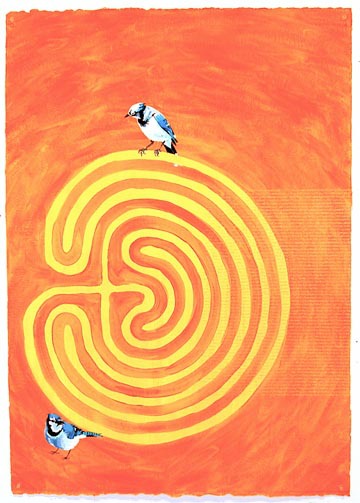
Zachariah, 2007, acrylic and silkscreen on paper
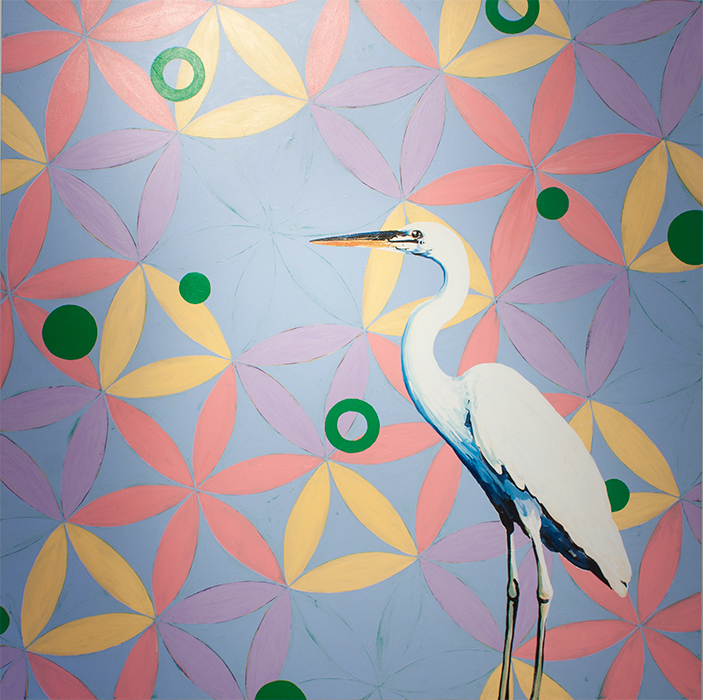
Humbolt's Cosmos, 2013, acrylic on canvas
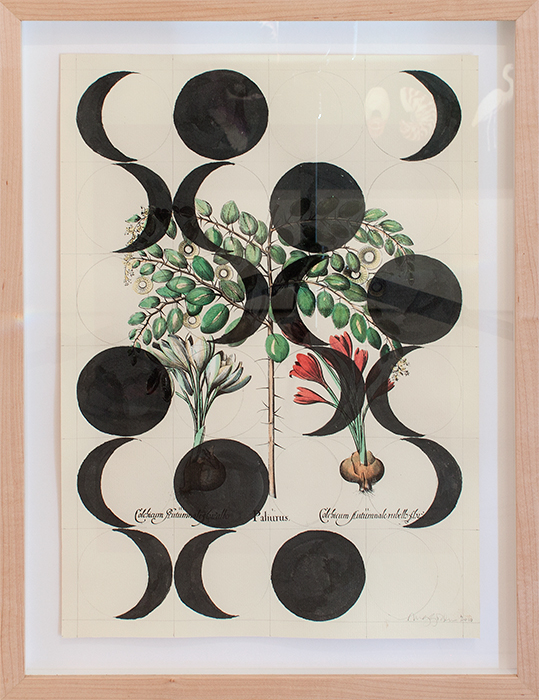
Untitled, 2010, acrylic ink on antique print (hand-colored watercolor over lithograph on Ingres Fabriano paper, artist unknown)
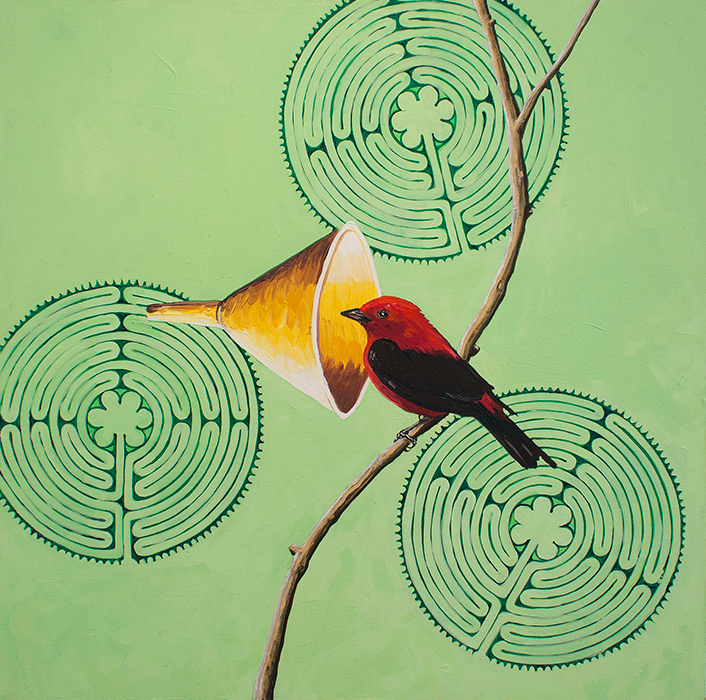
Abraham, 2006, acrylic on canvas
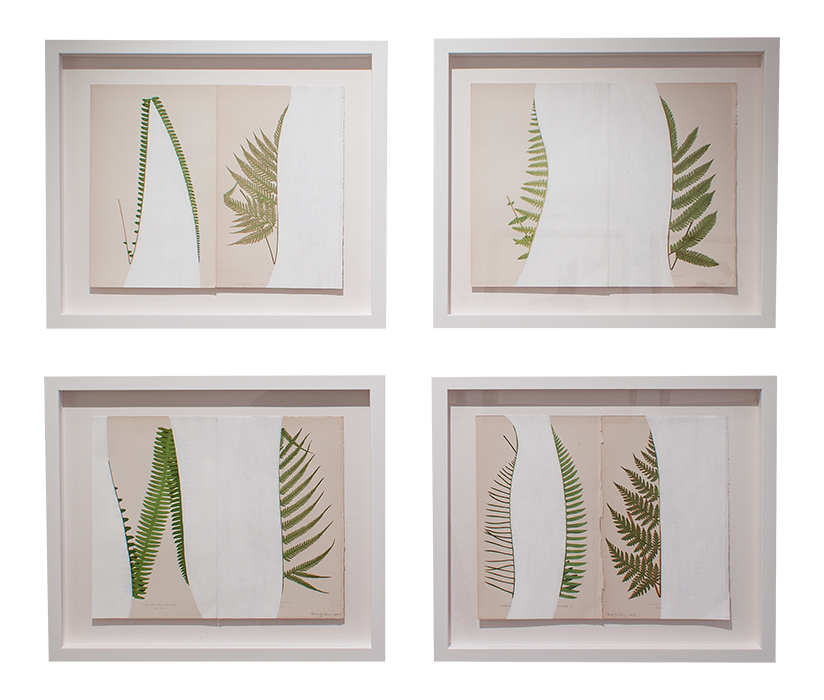
Untitled, Fern I-IV, 2015, acrylic and gesso on antique book pages (diptychs in each frame)

Body, 2001, acrylic and enamel on canvas

Stage One: Carbon, 2014, ink on antique book pages: Wild Flowers of America, with paintings by Mary Vaux Walcott, Crown Publishers, 1953
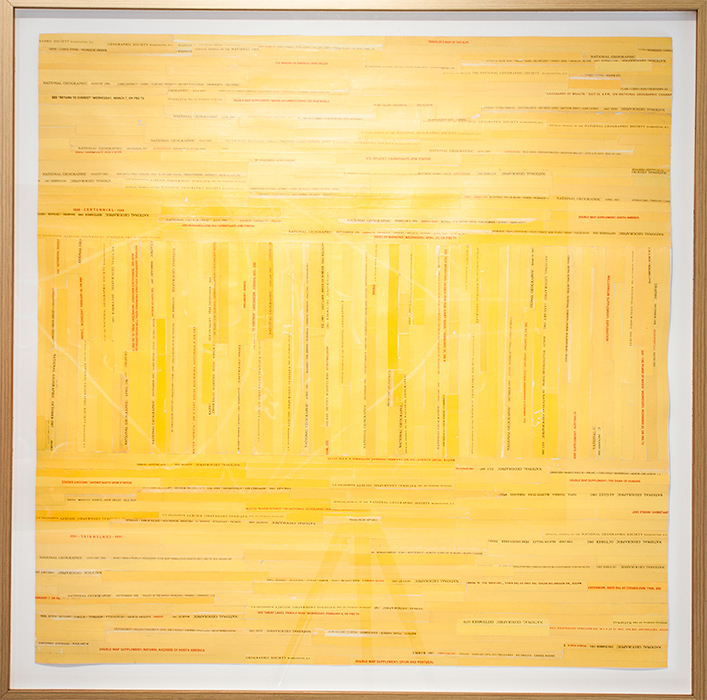
Yellowquoise #7, 2007, collage on canvas (National Geographics)
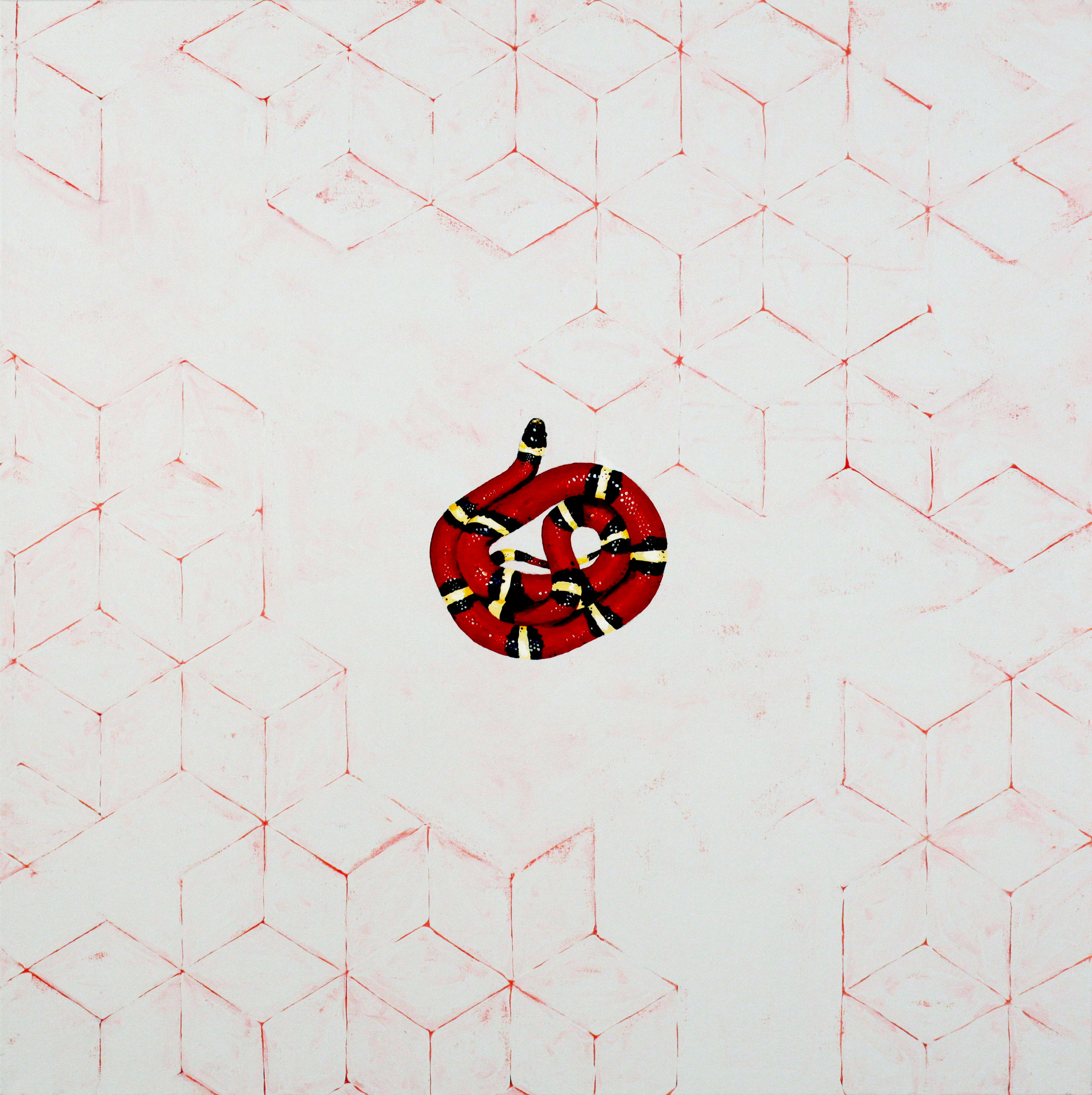
White Noise, 2014, acrylic and latex on canvas

